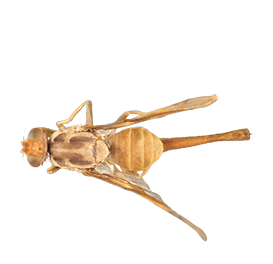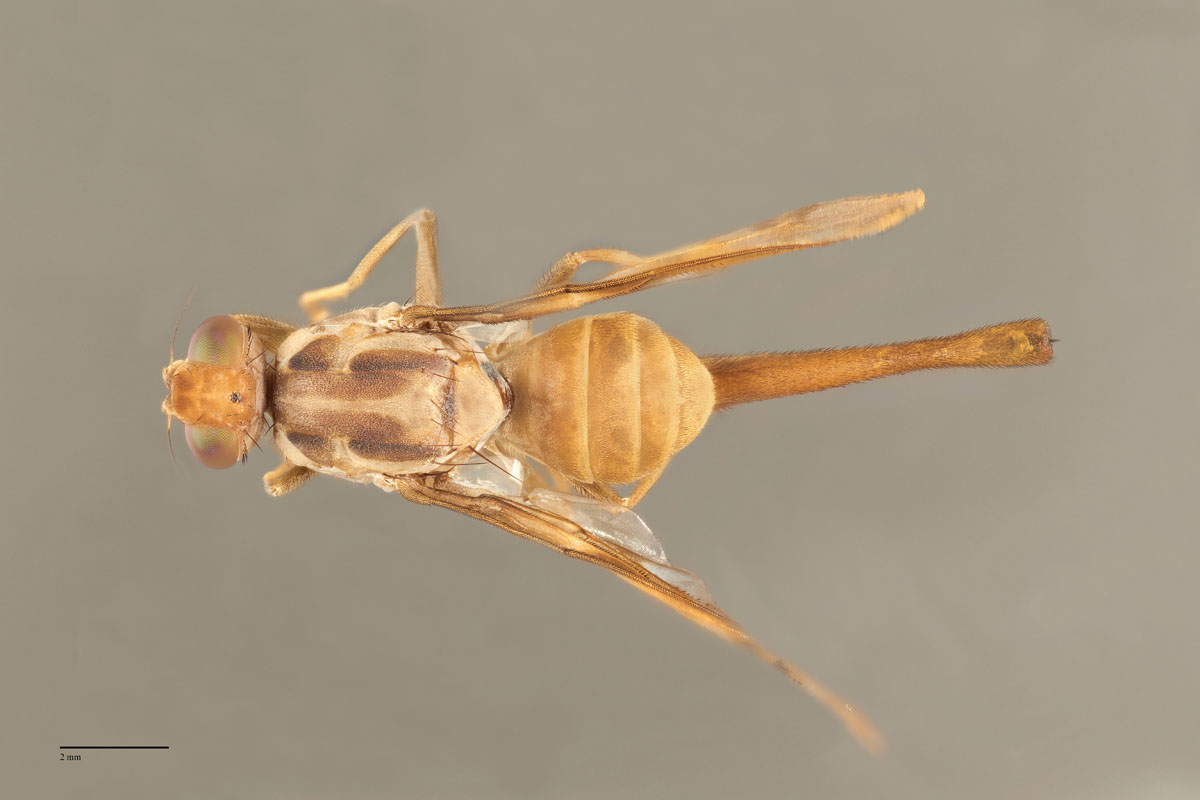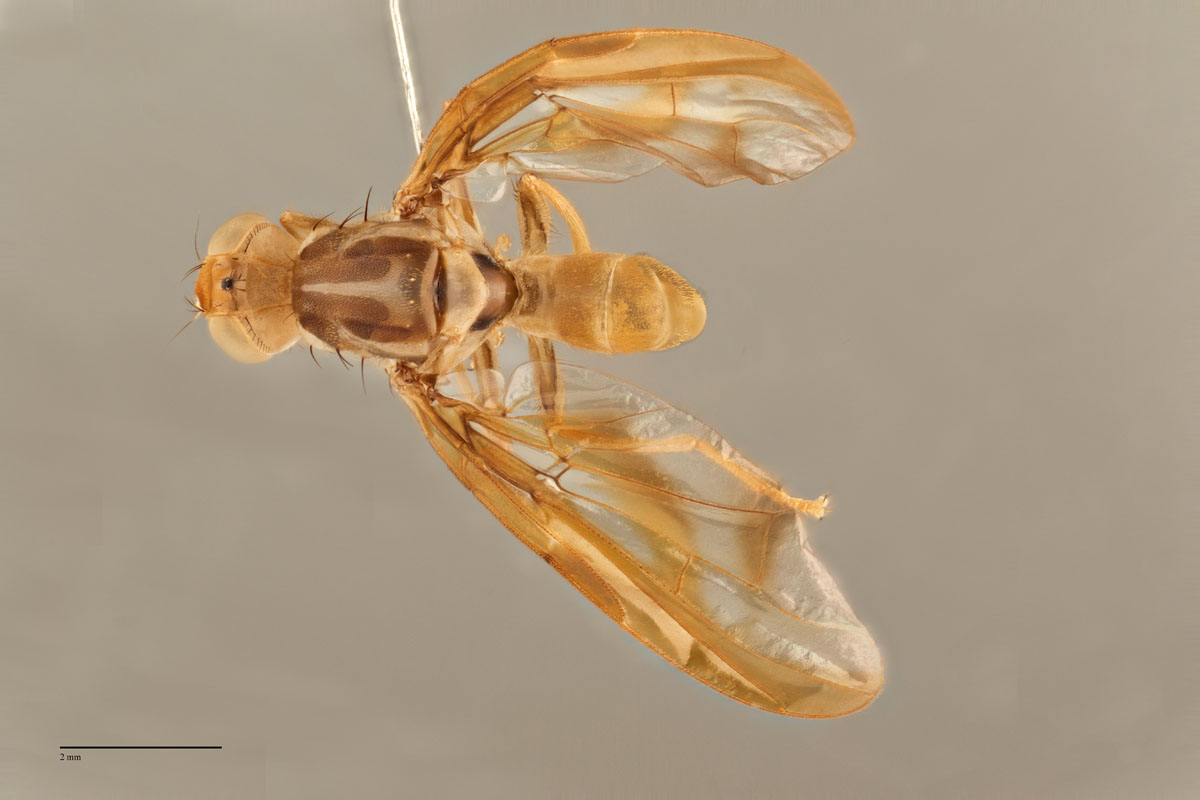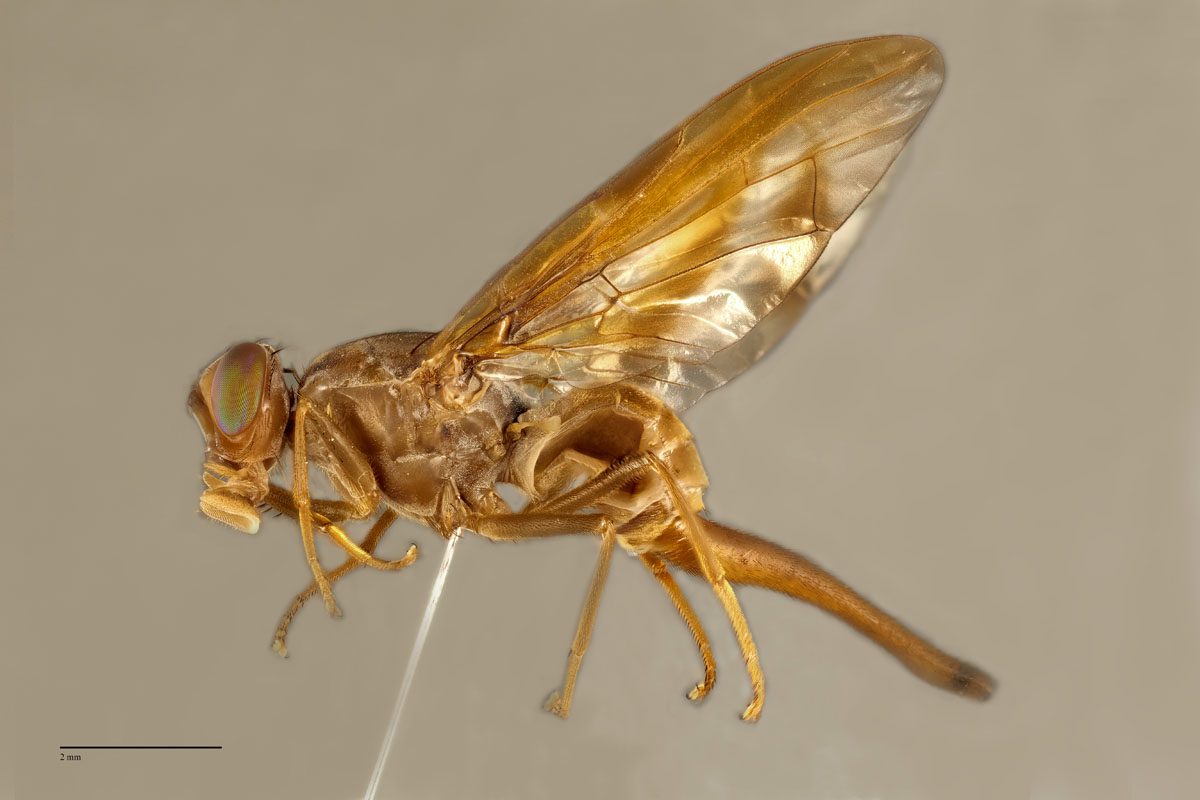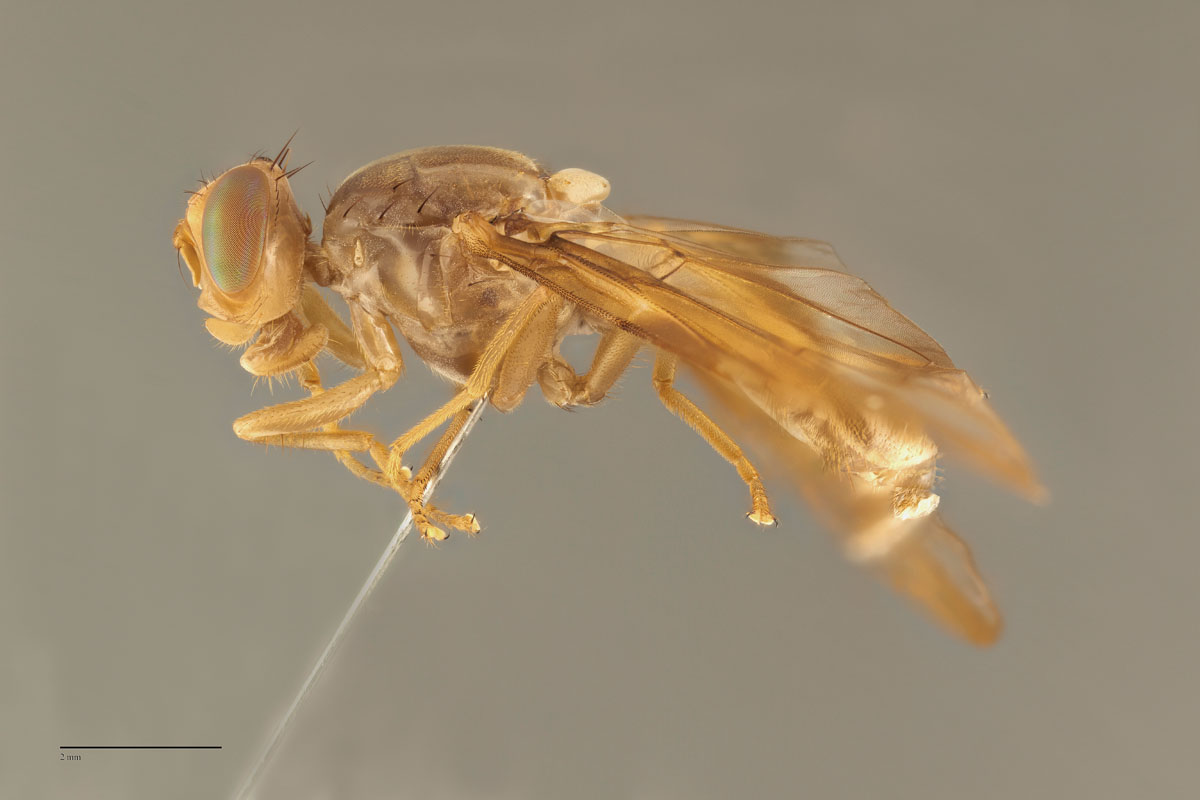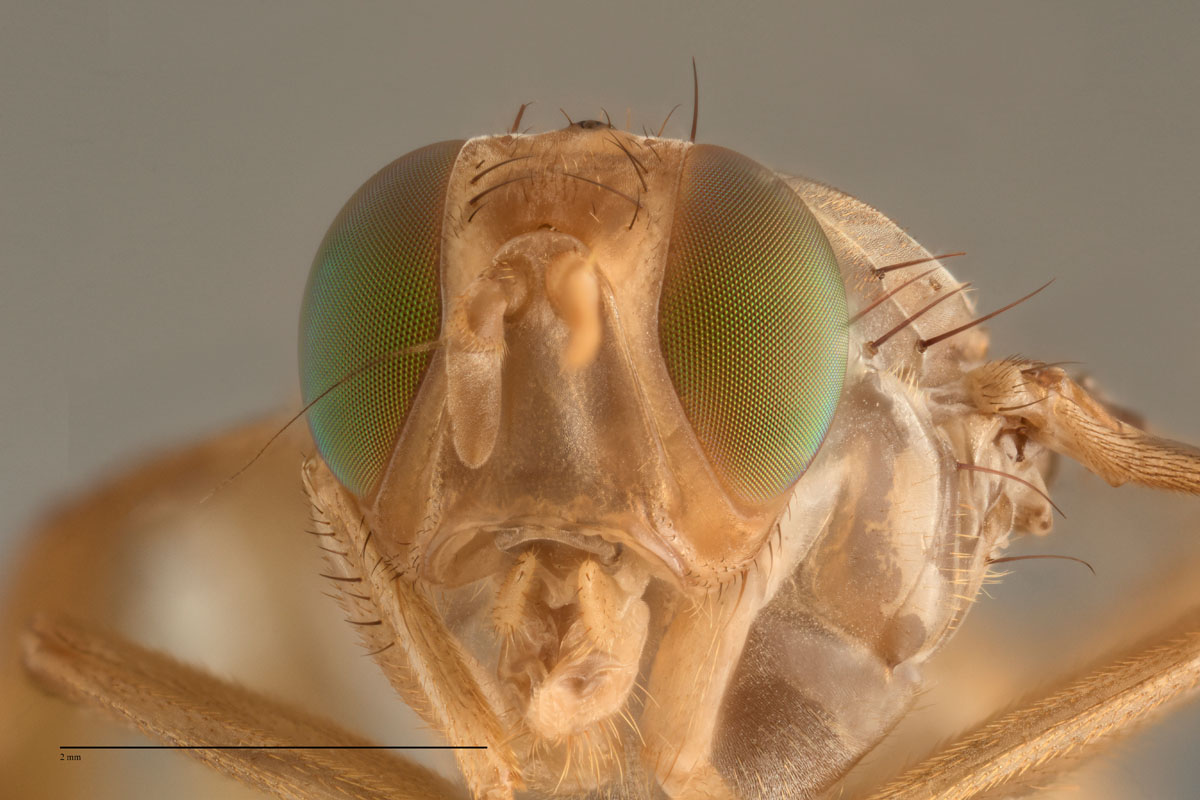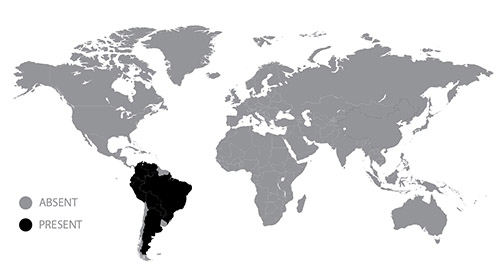Diagnosis
Morphological – adult
This species is in the grandis-group and is noticeably large in size.
Features include:
- frons without brown markings except ocellar tubercle
- mesonotum orange or dark orange with three postsutural vittae
- scutum with dark brown slender dorsocentral vitta
- scutellum entirely yellow or with markings only on extreme base of disk
- subscutellum entirely yellow to orange
- mediotergite yellow to red-brown medially, dark brown laterally
- wing pattern typical of Anastrepha (S-band complete or at most interrupted at crossvein r-m, C-band and at least proximal arm of V-band present)
- wing entirely infuscated from anterior margin to vein R4+5, infuscation around dm-cu, C-band and S-band broadly connected, V-band not connected anteriorly to S-band, V-band distal arm absent
- abdominal tergites without brown markings
- aculeus length 5.25 – 6.2 mm; aculeus tip length 0.55 – 0.70 mm; aculeus tip width 0.16 – 0.18 mm
- lateral markings of aculeus tip not curved dorsally.
Morphological – larvae
See Pest Fruit Flies of the World.
Molecular
DNA barcoding
Diagnostic BOLD reference data available
PCR-RFLP Test 1
BsrI: Data not available
HinfI: Data not available
HhaI: Data not available
Sau3AI: Data not available
SnaBI: Data not available
SspI: Data not available
Vspl: Data not available
PCR-RFLP Test 2
DdeI and Sau3A are fully diagnostic
DdeI: 850, 270, 220,120
Sau3A: 770, 530, 110, 80
